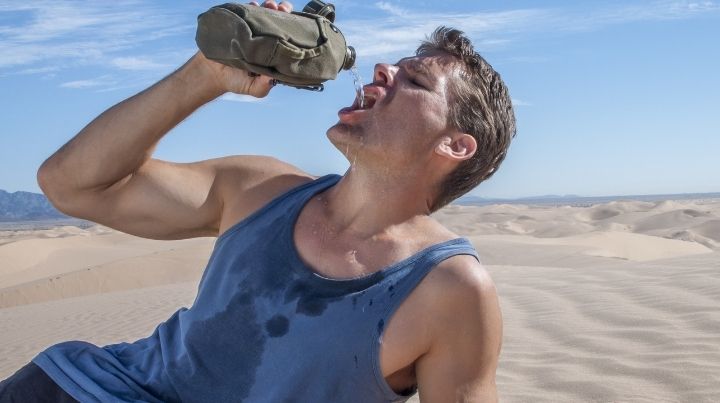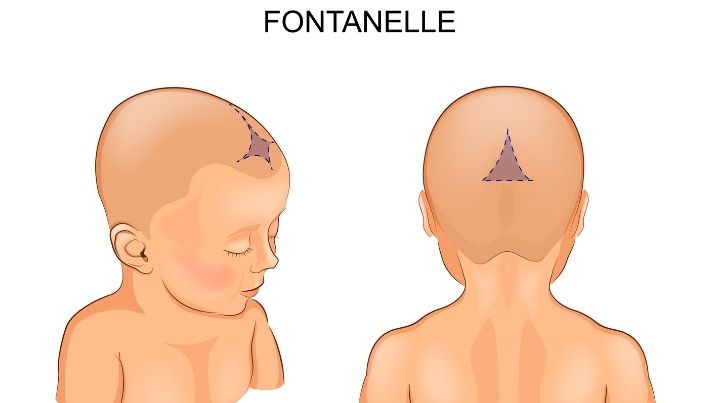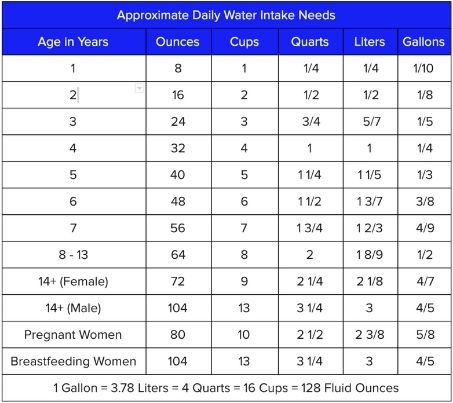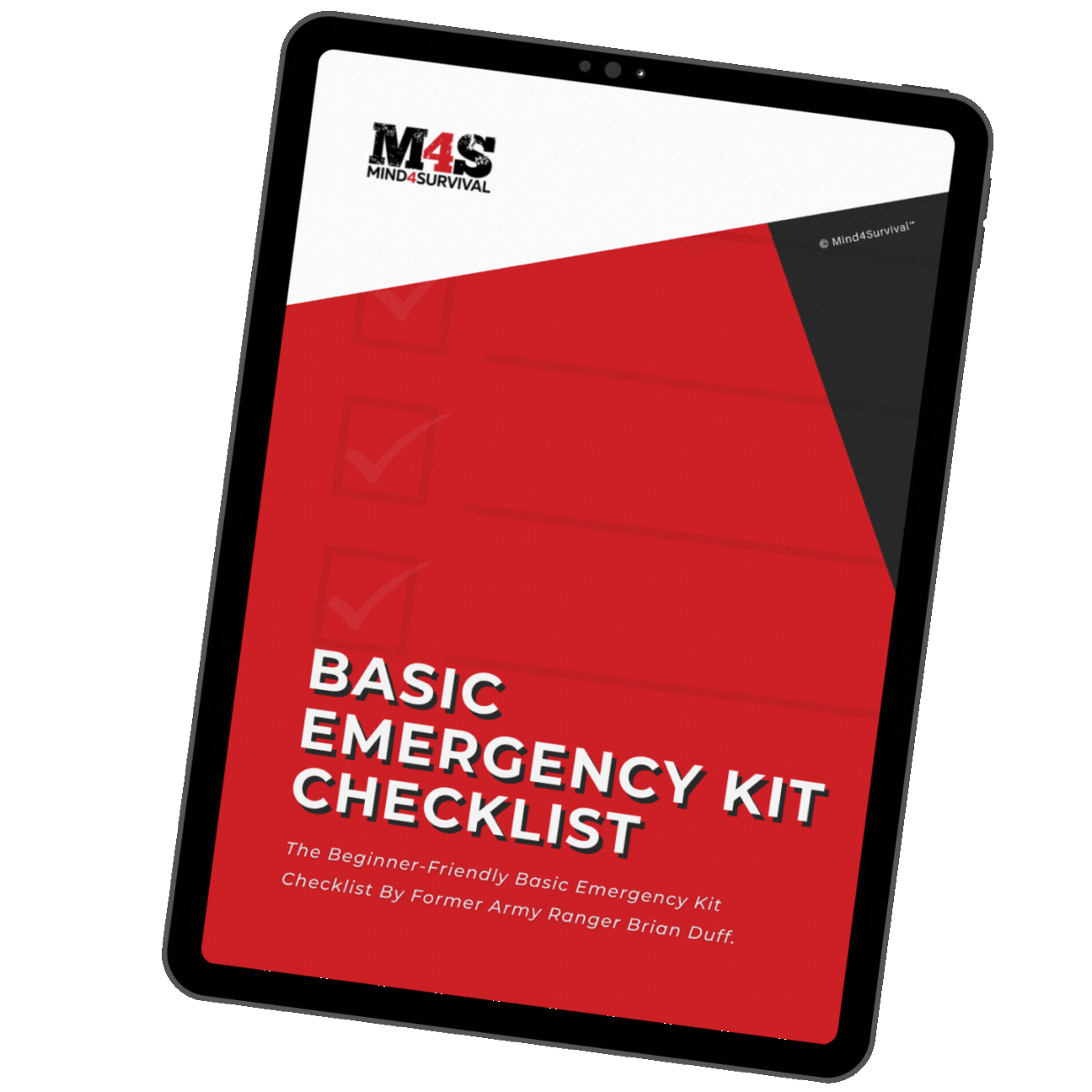Dehydration Facts: Everything You Need to Know

Dehydration Facts: What is Dehydration?
One of the most important dehydration facts is that it is a state in which your body has water and fluid imbalance. Dehydration happens for many reasons but ultimately occurs when your body cannot retain enough water and other fluids (Mayo Clinic, 2018).
Not having adequate fluid levels in your body is always a cause for concern because people who become dehydrated run the risk of developing problems, including some that are life-threatening. For instance, people who fail to hydrate properly are more susceptible to heat injury, kidney problems, seizures, and potentially hypovolemic shock.
Water is the driving force of all nature. ~Leonardo da Vinci
The Hypothalamus and Dehydration
The adult human body is made up of approximately 50%-60% water, depending on your gender (U.S. Geological Survey, 2018). It’s the water in your body that helps your cells to live and thrive. It also  aids with your body’s temperature regulation, removing waste products, and digestion (Laskey, 2015). Your body works to maintain a healthy fluid balance through a sophisticated water management system. With its roots deep inside your brain, this system signals the body when it needs to consume or expel water.
aids with your body’s temperature regulation, removing waste products, and digestion (Laskey, 2015). Your body works to maintain a healthy fluid balance through a sophisticated water management system. With its roots deep inside your brain, this system signals the body when it needs to consume or expel water.
One of the dehydration facts that not everybody knows is that the hypothalamus is at the heart of this system. When your fluid levels start getting low, the hypothalamus sends out signals to get you to drink (Johnson, 2018). It’s this same region of the brain that tells your kidneys that it’s time to reduce your fluid levels when you over-hydrate. In other words, your hypothalamus maintains your body’s internal balance, which is also known as homeostasis.
The hypothalamus works to regulate our homeostasis because our bodies are steadily losing water as we breathe, urinate, defecate, and sweat. While these lost fluids can be replenished through the intake of new fluids, failing to consume enough fluids could result in dehydration. While drinking fluids can reverse mild dehydration, severe dehydration often requires intervention by medical professionals.
People at Risk of Dehydration
More important dehydration facts you should know is who is most prone to becoming dehydrated. It is more common in certain groups of people.
For example, athletes, children, seniors, and pregnant women are more likely to become dehydrated. People living at higher altitudes are also more prone to imbalance.
People who are injured, sick with a fever, or vomiting have an increased likelihood of experiencing dehydration (Healthwise Staff, 2018).
Dehydration Facts: Symptoms
Dehydration is easy to self-diagnose. If you pay attention to the color of your urine and your level of thirst, you shouldn’t have to worry about becoming dehydrated. However, if you don't, you may suffer severe and life-threatening complications.
An obvious symptom of dehydration is when urine becomes progressively darker or output decreases. If this happens, you should consider increasing your fluid intake to prevent dehydration.
Your goal is to try to keep your urine as clear as possible. Also, regardless of your level of thirst, take steps to maintain consistent water intake. This will help you avoid becoming dehydrated.
The common symptoms of dehydration include:
- Lethargy
- Muscle cramps
- Disorientation
- Rapid heartbeat
- Frequent headaches
- Dizziness
- Dry mouth
The Symptoms of Severe Dehydration
If your dehydration is more severe, the symptoms become more serious. The signs of chronic or severe dehydration include:
- Sunken eyes
- Dry and shriveled skin
- Increased heart rate
- Heart palpitations
- Increased respiratory rate
- Low blood pressure
- Lack of sweating
- Fever
- Delirium
- Unconsciousness
Dehydration Facts Regarding Children

Children can't always tell you how they're feeling. So, important dehydration facts to know are the different symptoms of dehydration that kids display:
- Dry mouth and tongue
- Irritability
- Baby cries with no tears
- A sunken fontanel
- Sunken eyes and cheeks
Dehydration Facts: What Causes Dehydration?
Dehydration occurs when the amount of fluid leaving your body exceeds the amount of fluid entering your body. There are many reasons why a person becomes dehydrated, but the most preventable reason is failing to drink water when it’s available.
Additionally, other common causes of dehydration include:
Diarrhea: Diarrhea is a common cause of dehydration. When you have diarrhea, your large intestines have a difficult time absorbing liquids. This means that the water you consume passes through your digestive system and out of your body without ever hydrating your cells.
Vomiting: Like diarrhea, vomiting is a common cause of dehydration. In the case of vomiting, fluids never make it into your large intestine to be absorbed by your body.
Vomiting and Diarrhea Combined: Dehydration is more likely when diarrhea and vomiting occur at the same time. While this may not be as common in the first world, it is in the third world while getting away from civilization or during disasters.
Sweating: The human body responds to increasing heat through sweat, also known as sweating. Elevated temperatures, humid weather, high fever, and physical activity all cause an increase in sweating. Ultimately, it’s important to remember to take in plenty of fluids if you begin to work up a sweat. Concerning sweating, it’s good to know that the average person can lose over 1/3 of a gallon per hour during increased activity such as exercise (Bernhardt, n.d.).
Diabetes: Type 2 Diabetes interferes with your body's sugar levels. When this interference happens, it may elevate your sugar levels, which triggers increased urine production and a subsequent loss of fluids. You should speak with your doctor if you have diabetes and are continually thirsty or urinate frequently.
Inability to Drink Fluids: The physical inability to consume adequate liquids is another possible cause of dehydration. Whether it is a lack of available water, vomiting, or lacking the strength to drink. These reasons, coupled with ordinary or extraordinary impacts on the water supply, can compound the inability to drink (Wedro, n.d.).
Dehydration Facts: Complications
Dehydration can cause a variety of complications. Some complications are not life-threatening if promptly addressed, but some can become life-threatening emergencies.
Some of the complications that are associated with dehydration are:
Heat Cramps: Heat cramps are short-lived, painful cramps that most often involve muscles such as the calves, thighs, and shoulders. When suffering from heat cramps, a person’s muscles may spasm or jerk involuntarily. Heat cramps often occur while exercising or working in a hot environment. Likewise, heat cramps sometimes begin a few hours after working in a warm climate or working out (Felson, 2017).
Heat Exhaustion: Heat exhaustion is a condition with symptoms that may include substantial sweating and a rapid pulse, a result of a person’s body dehydrating or overheating. Some signs of heat exhaustion are cool, moist skin, heavy sweating, dizziness, weakness, muscle cramps, headache, and nausea (Staff, 2017).
The treatment for heat exhaustion is the same as the treatment for heat cramps. First, when someone shows signs and symptoms of heat exhaustion, have them stop all activity and rest. Next, try to move them to a cooler location. Finally, try to drink cool water or sports drinks. If at any time a person’s condition worsens, seek professional medical care.
Heat Stroke: Heat stroke is a severe and potentially fatal condition. The cause of heatstroke is an elevated body temperature, which is often accompanied by dehydration. When it comes to preventing heat stroke, the best method is to avoid doing strenuous activity in the heat and to stay hydrated (Stöppler, n.d.). However, when a person is affected by heat stroke, he or she may display any one or a combination of these symptoms: hot dry skin, confusion, anxiety, disorientation, and possibly unconsciousness.
How to Treat Heat Stroke
When treating heatstroke, it’s important to remember that the victim must be treated immediately to avoid possible organ failure.
- Move the victim to a shady area out of the direct sunlight. Remove or open up his or her clothing while attempting to be respectful of the victim’s privacy. Apply cool or slightly warm water to the skin, or if possible, submerge the victim in cool or slightly warm water. For example, consider soaking towels, using a garden hose, or placing the victim in a bathtub to bring down his or her body temperature. You can also fan the victim, which may help promote sweating and cooling through evaporation. Should you have ice packs available, place those in the armpits and groin to transfer the heat from the victim.
- If the victim is alert, oriented, and able to drink, have him or her drink cool drinks such as water and fruit juice. Don’t forget, though, that consuming alcohol or caffeine may increase your dehydration, so avoid both of those.
- Routinely take the victim’s body temperature. Monitor the victim’s body temperature until it at least drops below 102°F (38.8°C).
Seek higher-level medical care for the victim, such as calling 9-1-1 to notify Emergency Medical Services (EMS) (Stöppler, n.d.).
Other reported complications of heat stroke include:
- Seizures
- Hypovolemic shock (low blood volume)
- Kidney failure
- Coma
- Death
Dehydration Facts | Prevention and Treatment
Dehydration is easy to both prevent and treat. When it comes to prevention, though, the most reliable measure for fighting against dehydration is to make drinking an adequate amount of water a priority every day. When you achieve this, you will have a good habit that will pay off over your lifetime.
First, it’s important to focus on fluid replacement to treat dehydration. Fluid replacement may be as simple as having the affected person drink fluids if they're coherent and able to do so without assistance. If oral rehydration occurs in this manner, the victim should slowly sip tiny amounts of clear liquids.
Forms of Fluid Replacement:
- Water (Water may not be safe to use with dehydrated infants. Instead, consider using Pedialyte or another electrolyte-balanced drink)
- Clear broths
- Popsicles or Jell-O
- Gatorade, Pedialyte, Powerade, or other similar drink
- Intravenous (IV) fluids administered by an authorized healthcare professional
You can determine the success of the fluid replacement treatment by monitoring the urine output of the victim. When a person is dehydrated, the kidneys hold on to as much fluid as possible. As the kidneys retain water, urine output decreases, and a person’s urine becomes more condensed. If the fluid replacement treatment is successful, the body holds water until the kidneys detect an overabundance of fluid and increase urinary output (Wedro, n.d.).
Treating the Underlying Causes of Dehydration
Identifying, sooner rather than later, that someone is battling with dehydration, the easier your efforts to rehydrate them will be. Some actions that you may consider when working to defeat dehydration are:
- Move the person suffering from dehydration out of the sun, loosen or respectfully remove their clothes, and, whenever possible, provide a fluid replacement to victims who are conscious, coherent, and capable of drinking on their own. Make sure the person drinks enough water (see “Approximate Daily Water Intake Needs Table”) each day.
 Have people with diarrhea and vomiting change to a clear fluids diet for 24 hours. If a person can ingest medication without vomiting it back up, provide medicines that help reduce the symptoms that lead to fluid loss. Then, once a person’s symptoms subside, gradually return the person to a regular diet when they can tolerate it.
Have people with diarrhea and vomiting change to a clear fluids diet for 24 hours. If a person can ingest medication without vomiting it back up, provide medicines that help reduce the symptoms that lead to fluid loss. Then, once a person’s symptoms subside, gradually return the person to a regular diet when they can tolerate it.- To provide cooling measures to people who are suffering from fever. Cooling measures for people afflicted with a fever may include applying water as discussed earlier, and as an individual can tolerate, providing medications that control fever.
Electrolyte Drinks for Dehydration
It should be apparent by now that staying hydrated is a continuous struggle. Not only is it a constant struggle, but it is made more difficult by circumstances that are often beyond our control. One of those circumstances is that when you sweat, in addition to the fluid that evaporates while cooling you down, you also lose minerals that are vital to your health and well-being. Those minerals are called electrolytes, and knowing how to replace them helps you stay on the winning side of the hydration game.
The Electrolyte Replacement Drink
The easiest-to-remember electrolyte replacement drink is made using three simple ingredients: water, sugar, and salt (preferably natural sea salt). An added benefit of this basic electrolyte replacement drink is that because the ingredients are all dry, they can be pre-measured and packaged ahead of time.
When mixing up your rehydration drink mix, use a 10 to 1 ratio of sugar to salt (Hendricks, n.d.). If you prefer to use a natural sweetener, feel free to swap the sugar with honey, such as Manuka honey. You can also add fresh fruit such as mango, apples, or bananas to the mix. Once you mix the ingredients into the water, give it to the dehydrated person to drink. Don’t forget that you’ll need to store the drink in a cool location, such as a refrigerator if you add fresh fruit to the mix.
Basic Electrolyte Replacement Drink:
- Open a one-quart (32 oz.) water bottle.
- Fill with 32 oz. of purified water.
- Add five tsp. of sugar.
- Add ½ tsp. Salt.
- Put the cap on your bottle.
- Shake well and drink.
Natural Electrolyte Replacement Drink:
- Open a one-quart (32 oz.) water bottle.
- Add 16 oz. of purified water.
- Fill with 16 oz. of fresh citrus juice.
- Add ½ tsp. Pink Himalayan Salt.
- Add ½ tsp. of Manuka honey.
- Put the cap on your bottle.
- Shake well and drink.
The Bottom Line on Dehydration Facts
The most important of all dehydration facts to note is that the earlier you notice that you or someone else is becoming dehydrated, the easier it is to treat the issue.
Have you ever suffered from severe dehydration or heat illness? Have you ever had to treat it? Share your experiences in the comments.
Stay safe,

Don't Miss Out!
Join the thousands of people who rely on Mind4Survival preparedness advice by subscribing to our FREE newsletter.
- Practical preparedness information
- Zero Spam
- < 0.25% of people unsubscribe




Join Mind4Survival!
Stay informed by joining the Mind4Survival! 100% Secure! 0% Spam!
Follow Us!
Affiliate Disclosure
Mind4Survival is a free, reader-supported information resource. If you make a purchase through our link, we may, at no cost to you, receive an affiliate commission.


Excellent article, hydrate or die.
Yes, very detailed.
Years before, I barely drink any H20. I turn to juice, milk, and soda whenever I feel thirsty. Now, I have decided to change that, and I drink at least 4-5 liters of water per day. I avoid milk and other dairy products now because somehow I became lactose intolerant which is kinda ironic.
This year, on a whim and because it was a really good sale, I added Gatorade to my hunker down disaster kit as well as water. I’ve been looking for good dry mixtures for our bug out bags. I’ve seen anywhere from at 1:1 sugar/salt ratio to 10:1. I’m afraid the 10:1 might set me up for a sugar rush then crash. Has anyone tried it?
Informative article, thank you! Moved from sea level to 6035ft.asl. Looking for real estate at the time, hot days with severe UV Inices often. My symptoms were unrecognized by this R.N. as abdominal cramps! Real Estate agent (R.N.) reminded me of that symptom!
Was in Mexico. August one year, V.W.bus. hotter than hell…I noticed some delirium setting in in the form of confusion…Finally got into town, walked into a store an started chugging down a gallon of water! Good to know any other possible symptoms others may have experienced! Thank You!
I saw something on your website that was broken. I am a leading IT expert and I would like to volunteer my time to fix your site. Would that be ok?
Feel free to call me or text me 1 (205) 383-3754
Damian